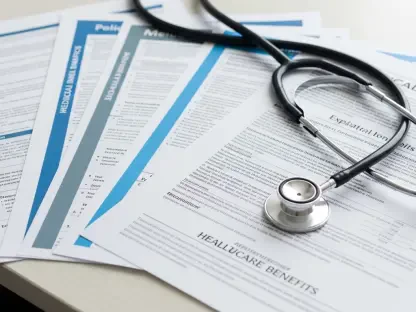Today, we’re sitting down with Faisal Zain, a renowned healthcare expert with a deep background in medical technology and device manufacturing. With years of experience driving innovation in diagnostics and treatment tools, Faisal offers a unique perspective on the challenges patients face in the healthcare system, especially when it comes to unexpected medical costs and the intricacies of billing. In this conversation, we’ll explore the intersection of technology, policy, and patient experience, diving into how medical procedures are priced, the impact of being uninsured, and the broader systemic issues that often leave individuals with staggering bills after emergency care.
Can you share your thoughts on how the complexity of medical procedures, like a complicated arm fracture repair, can lead to unexpectedly high costs for patients?
Absolutely. When you look at a case like a distal humerus fracture, which is a rare and complex injury, the costs can skyrocket due to several factors. First, the surgery often requires specialized implants—think plates and screws—that are expensive to manufacture and tailor to a patient’s specific injury. Then, there’s the operating room time, which can extend significantly if the surgeon encounters unexpected complications, like bone fragments or nerve damage. Anesthesia, staff expertise, and post-op care all add up too. From a tech perspective, the devices we develop aim for precision, but that precision comes at a cost, and when a patient is uninsured, they bear the full brunt of those layered expenses without the buffer of negotiated rates that insurance might provide.
How do you see the lack of health insurance impacting patients’ decisions and outcomes in emergency situations?
It’s a heartbreaking reality. Without insurance, patients are often forced to make impossible choices—do they seek care and risk financial ruin, or delay treatment and risk their health? In emergencies, like a severe fracture, there’s often no choice but to go to the hospital. But then, the financial fallout can be devastating. I’ve seen how uninsured patients are charged the full “sticker price” for services, without the discounts insurers negotiate. This can lead to bills that are double or triple what an insured patient might pay for the same procedure. It’s not just about the money—it’s the stress and long-term debt that can affect mental and physical recovery. We need better safety nets to protect these vulnerable patients.
What role do you think medical technology plays in both driving up costs and potentially solving billing transparency issues?
Medical technology is a double-edged sword. On one hand, innovations in diagnostics and surgical tools—like advanced imaging or custom implants—improve outcomes but are expensive to develop and implement. Each new device or system often comes with a high price tag because of R&D costs, regulatory hurdles, and limited production scales. On the other hand, technology can be harnessed to improve transparency. For instance, digital platforms could integrate real-time cost estimates based on a patient’s specific condition and local hospital pricing data. If we can leverage tech to give patients a clearer picture of potential costs before a procedure, it could empower them to ask questions or seek alternatives. The challenge is getting hospitals and manufacturers to prioritize this kind of transparency over profit margins.
From your perspective, how effective are current policies like the No Surprises Act in protecting uninsured patients from massive medical bills?
The No Surprises Act is a step in the right direction, especially for uninsured or self-pay patients facing bills way higher than initial estimates. It offers a dispute process that can hold providers accountable if the final cost is unreasonably inflated compared to what insurers typically pay. However, it’s not a silver bullet. Many patients don’t even know this option exists, and the process—requiring documentation, a fee, and a tight timeline—can be daunting, especially for someone recovering from surgery or dealing with financial stress. Plus, it doesn’t address the root issue of why these costs are so high to begin with. We need broader reforms to tackle pricing opacity and ensure protections are accessible and well-publicized.
What can be done on the manufacturing side to help reduce the cost of critical medical devices used in surgeries like fracture repairs?
As someone who’s worked in medical device manufacturing, I believe there are actionable steps we can take. First, we can focus on modular designs for implants and tools that allow for scalability in production, which can lower costs without sacrificing quality. Second, collaborating with hospitals to forecast demand more accurately can prevent overproduction and waste, driving down prices. Finally, pushing for more competition in the market—by easing some regulatory barriers for smaller innovators—can encourage cost-effective alternatives. It’s a balancing act, though. We can’t compromise on safety or efficacy, so any cost-saving measure has to be rigorously tested to maintain patient trust and outcomes.
What is your forecast for the future of medical billing transparency and patient protections in the healthcare system?
I’m cautiously optimistic. With growing public awareness and advocacy, there’s pressure on policymakers and providers to make billing more transparent. We’re likely to see more federal and state-level initiatives mandating upfront cost estimates and accessible pricing tools in the next decade. Technology will play a huge role—think AI-driven platforms that can predict costs based on real-time data. However, the pace of change depends on whether the industry prioritizes patients over profits. If we can align incentives—maybe through value-based care models where outcomes, not procedures, drive payment—we could see a system where patients aren’t blindsided by bills. But it’ll take sustained effort and collaboration across sectors to get there.








